 W
WThe East India Company Military Seminary was a British military academy at Addiscombe, Surrey, in what is now the London Borough of Croydon. It opened in 1809 and closed in 1861. Its purpose was to train young officers to serve in the East India Company’s private army in India.
 W
WThe Admiralty Research Laboratory (ARL) was a research laboratory that supported the work of the UK Admiralty in Teddington, London, England from 1921 to 1977.
 W
WThe Barracks was a military installation in Kingston upon Thames.
 W
WThe Battle of Britain Bunker is an underground operations room at RAF Uxbridge, formerly used by No. 11 Group Fighter Command during the Second World War. Fighter aircraft operations were controlled from there throughout the War but most notably during the Battle of Britain and on D-Day. Today it is run by Hillingdon Council as a heritage attraction with attached museum. A new visitor centre above ground opened in March 2018.
 W
WBeavers Lane Camp, Hounslow, London is a former camp of the British Army; it was originally built as an extension to the Cavalry Barracks, Hounslow and was also known as I.T. Centre, Hounslow.
 W
WCamp Griffiss was a US military base in the United Kingdom during and after World War II. Constructed within the grounds of Bushy Park in Middlesex,, England, it served as the European Headquarters for the United States Army Air Forces from July 1942 to December 1944. From here Dwight D. Eisenhower planned the D-Day invasion. Most of the camp's huts had been removed by the early 1960s, and a memorial tablet now stands on the site.
 W
WThe Churchill War Rooms is a museum in London and one of the five branches of the Imperial War Museum. The museum comprises the Cabinet War Rooms, a historic underground complex that housed a British government command centre throughout the Second World War, and the Churchill Museum, a biographical museum exploring the life of British statesman Winston Churchill.
 W
WConvoys Wharf, formerly called the King's Yard, is the site of Deptford Dockyard, the first of the Royal Dockyards, built on a riverside site in Deptford, by the River Thames in London, England. It was first developed in 1513 by Henry VIII to build vessels for the Royal Navy. Convoys Wharf also covers most of the site of Sayes Court manor house and gardens, home of diarist John Evelyn.
 W
WDeptford Dockyard was an important naval dockyard and base at Deptford on the River Thames, operated by the Royal Navy from the sixteenth to the nineteenth centuries. It built and maintained warships for 350 years, and many significant events and ships have been associated with it.
 W
WDeptford Wharf in London, UK is situated on the Thames Path southeast of South Dock Marina, across the culverted mouth of the Earl's Sluice and north of Aragon Tower. The housing here, completed in 1992, is on the site of former railway sidings and riverside wharves, and before then docks and building slips.
 W
WThe Douglas House, London was a US servicemen's club operated by the United States Air Force for twenty-five years at two different locations in London's West End. The club's purpose was to provide "home-style service" for the thousands of American airmen based in the United Kingdom and US servicemen of all branches who might be passing through. The first location opened after the Second World War in Mayfair. In 1959 the Douglas House was relocated to Lancaster Gate, near Hyde Park. In the early 1960s, its nightclub served as a springboard for the budding career of a nascent London band called the Detours, that later went on to greater fame as The Who. When the club closed in 1970, the property was sold to a private firm.
 W
WThe Duke of York's Headquarters is a building in Chelsea in the Royal Borough of Kensington and Chelsea, England. In 1969 it was declared a listed building at Grade II*, due to its outstanding historic or architectural special interest.
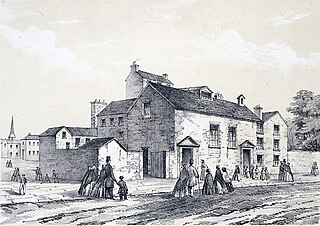 W
WThe Foundery, in Moorfields, was the first London foundry for casting brass cannon for the British Board of Ordnance. The building subsequently served as the first Wesleyan Methodist place of worship, and an important meeting place for the early Methodist community. In 1778, the Methodist congregation was moved to the nearby purpose-built Wesley's Chapel on City Road.
 W
WHM Victualling Yard, Deptford was a Royal Navy Victualling Yard established alongside Deptford Royal Dockyard on the River Thames. There was victualling activity on the site for the best part of 300 years from the mid-17th century through to the early 1960s.
 W
WRAF Kidbrooke was a Royal Air Force base, situated in Kidbrooke in south-east London, in the Royal Borough of Greenwich. The site was operational from 1917 to 1965 and was mainly used as a stores, maintenance and training facility.
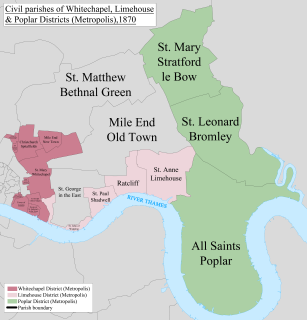 W
WThe Old Artillery Ground is an area of land in Spitalfields, London formerly designated one of the Liberties of the Tower of London and Crown Land.
 W
WThe Old Royal Naval College is the architectural centrepiece of Maritime Greenwich, a World Heritage Site in Greenwich, London, described by the United Nations Educational, Scientific and Cultural Organisation (UNESCO) as being of "outstanding universal value" and reckoned to be the "finest and most dramatically sited architectural and landscape ensemble in the British Isles". The site is managed by the Greenwich Foundation for the Old Royal Naval College, set up in July 1998 as a registered charity to "look after these magnificent buildings and their grounds for the benefit of the nation". The grounds and some of its buildings are open to visitors. The buildings were originally constructed to serve as the Royal Hospital for Seamen at Greenwich, now generally known as Greenwich Hospital, which was designed by Christopher Wren, and built between 1696 and 1712. The hospital closed in 1869. Between 1873 and 1998 it was the Royal Naval College, Greenwich.
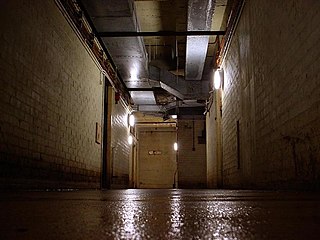 W
WPaddock is the codeword for an alternative Cabinet War Room bunker for Winston Churchill's World War II government, located at 109 Brook Road, Dollis Hill, northwest London, NW2 7DZ; under a corner of the Post Office Research Station site. The name derives from the nearby Paddock Road NW2, in turn named after a nineteenth-century stud farm, the Willesden Paddocks, situated nearby.
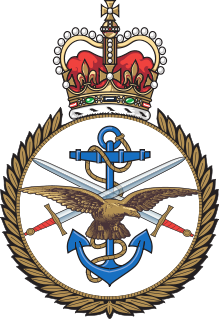 W
WThe Permanent Joint Headquarters (PJHQ) is the British tri-service headquarters from where all overseas military operations are planned and controlled. It is situated at Northwood Headquarters in Northwood, London. The Permanent Joint Headquarters is commanded by the Chief of Joint Operations (CJO) and the current CJO is Vice Admiral Sir Ben Key.
 W
WThe Queen Alexandra Military Hospital (QAMH) opened in July 1905. It was constructed immediately to the north of the Tate Britain adjacent to the River Thames on the borders of the neighbourhoods of Millbank and Pimlico, Westminster, London. The hospital closed in 1977, but several buildings remain.
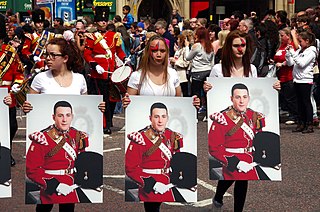 W
WOn the afternoon of 22 May 2013, a British Army soldier, Fusilier Lee Rigby of the Royal Regiment of Fusiliers, was attacked and killed by Michael Adebolajo and Michael Adebowale near the Royal Artillery Barracks in Woolwich, southeast London.
 W
WThe Royal Army Medical College (RAMC) was located on a site south of the Tate Gallery on Millbank, in Westminster, London, overlooking the River Thames. The college moved from the site in 1999 and the buildings are now occupied by the Chelsea College of Arts. The area around the college including the Tate, former military hospital and other adjacent areas is a conservation area. The former college buildings are now listed.
 W
WThe Royal Arsenal, Woolwich is an establishment on the south bank of the River Thames in Woolwich in south-east London, England, that was used for the manufacture of armaments and ammunition, proofing, and explosives research for the British armed forces. It was originally known as the Woolwich Warren, having begun on land previously used as a domestic warren in the grounds of a Tudor house, Tower Place. Much of the initial history of the site is linked with that of the Office of Ordnance, which purchased the Warren in the late 17th century in order to expand an earlier base at Gun Wharf in Woolwich Dockyard.
 W
WThe Royal Hospital Chelsea is a retirement home and nursing home for some 300 veterans of the British Army. Founded as an almshouse, the ancient sense of the word "hospital", it is a 66-acre (27 ha) site located on Royal Hospital Road in Chelsea. It is an independent charity and relies partly upon donations to cover day-to-day running costs to provide care and accommodation for veterans.
 W
WThe Royal Hospital School is a British co-educational independent day and boarding school with naval traditions. The school admits pupils from age 11 to 18 through Common Entrance or the school's own exam. The school is regulated by Acts of Parliament.
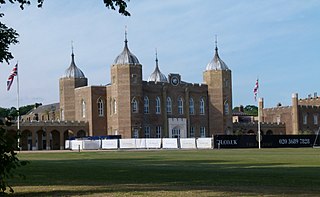 W
WThe Royal Military Academy (RMA) at Woolwich, in south-east London, was a British Army military academy for the training of commissioned officers of the Royal Artillery and Royal Engineers. It later also trained officers of the Royal Corps of Signals and other technical corps. RMA Woolwich was commonly known as "The Shop" because its first building was a converted workshop of the Woolwich Arsenal.
 W
WThe Royal Naval College, Greenwich, was a Royal Navy training establishment between 1873 and 1998, providing courses for naval officers. It was the home of the Royal Navy's staff college, which provided advanced training for officers. The equivalent in the British Army was the Staff College, Camberley and the equivalent in the Royal Air Force was the RAF Staff College, Bracknell.
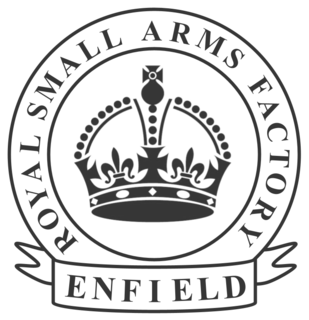 W
WThe Royal Small Arms Factory (RSAF) was a UK government-owned rifle factory in Enfield, adjoining the Lee Navigation in the Lea Valley. The factory produced British military rifles, muskets and swords from 1816. It closed in 1988, but some of its work was transferred to other sites.
 W
WSt Paul's Survives is a photograph taken in London during the night air raid of 29–30 December 1940, the 114th night of the Blitz of World War II. It shows St Paul's Cathedral, illuminated by fires and surrounded by the smoke of burning buildings. It was taken by photographer Herbert Mason in the early hours of 30 December, from the roof of Northcliffe House, the offices of the Daily Mail newspaper, on Tudor Street, close to Fleet Street.
 W
WThe Shrapnel Barracks was a British army base providing living accommodation in Woolwich in southeast London from the mid-19th century until the 1960s. Named after Lieutenant General Henry Shrapnel, it was situated to the northwest of the modern-day Stadium Road, on the western edge of Woolwich Common; the site is now occupied by the Queen Elizabeth Hospital.
 W
WThe Silvertown explosion occurred in Silvertown in West Ham, Essex on Friday, 19 January 1917 at 6.52 pm. The blast occurred at a munitions factory that was manufacturing explosives for Britain's First World War military effort. Approximately 50 long tons of trinitrotoluene (TNT) exploded, killing 73 people and injuring 400 more, as well as causing substantial damage in the local area. This was not the first, last, largest, or the most deadly explosion at a munitions facility in Britain during the war: an explosion at Faversham involving 200 long tons of TNT killed 105 in 1916, and the National Shell Filling Factory, Chilwell, exploded in 1918, killing 137.
 W
WHMS St Vincent was a shore establishment of the Royal Navy, located in London during the 1990s.
 W
WWoolwich Dockyard was an English naval dockyard along the river Thames at Woolwich in north-west Kent, where many ships were built from the early 16th century until the late 19th century. William Camden called it 'the Mother Dock of all England'. By virtue of the size and quantity of vessels built there, Woolwich Dockyard is described as having been 'among the most important shipyards of seventeenth-century Europe'. During the Age of Sail, the yard continued to be used for shipbuilding and repair work more or less consistently; in the 1830s a specialist factory within the dockyard oversaw the introduction of steam power for ships of the Royal Navy. At its largest extent it filled a 56-acre site north of Woolwich Church Street, between Warspite Road and New Ferry Approach; 19th-century naval vessels were fast outgrowing the yard, however, and it eventually closed in 1869. The former dockyard area is now partly residential, partly industrial, with remnants of its historic past having been restored.